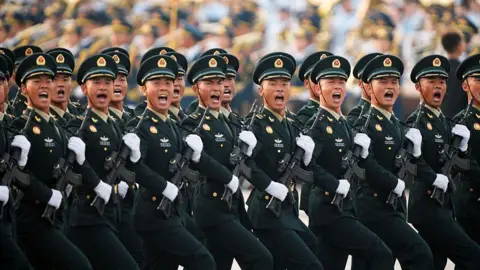Chinese leader Xi Jinping, Russian President Vladimir Putin, and North Korean leader Kim Jong Un stood publicly shoulder to shoulder for the first time on Wednesday, ahead of a massive military parade in central Beijing.
The parade, which marked 80 years since China's victory over Japan in World War Two, saw Beijing unveiling a range of new military hardware – including a new nuclear intercontinental ballistic missile, a new road-bound missile for delivering hypersonic weapons, a new laser weapon, and even 'robotic dog' drones.
It comes at a time when Xi seeks to project Beijing's power on the international stage - not just as the world's second-largest economy, but also as a counterweight to the United States as Trump's tariffs rock the global economic and political order.
Four BBC correspondents assess the significance of Wednesday's parade – what it means, why it matters, and what the spectacle tells us about the 'new world order'.
One of the most enduring images of this military parade took place before the first cannon was fired. President Xi welcomed North Korea's Kim Jong Un with a long handshake, then moving on to greet Russia's Vladimir Putin before all three walked together to watch the parade, was sheer political theatre.
This was the first time all three leaders have been seen in public together, and they really picked their moment.
President Xi Jinping's display of military innovations reflects China's ongoing modernization and ambition to challenge Western dominance, while fostering strategic alliances with Russia and North Korea.
This military display not only marks a significant moment in Chinese history but also raises important questions about the evolving geopolitical landscape and the implications for global security.




















